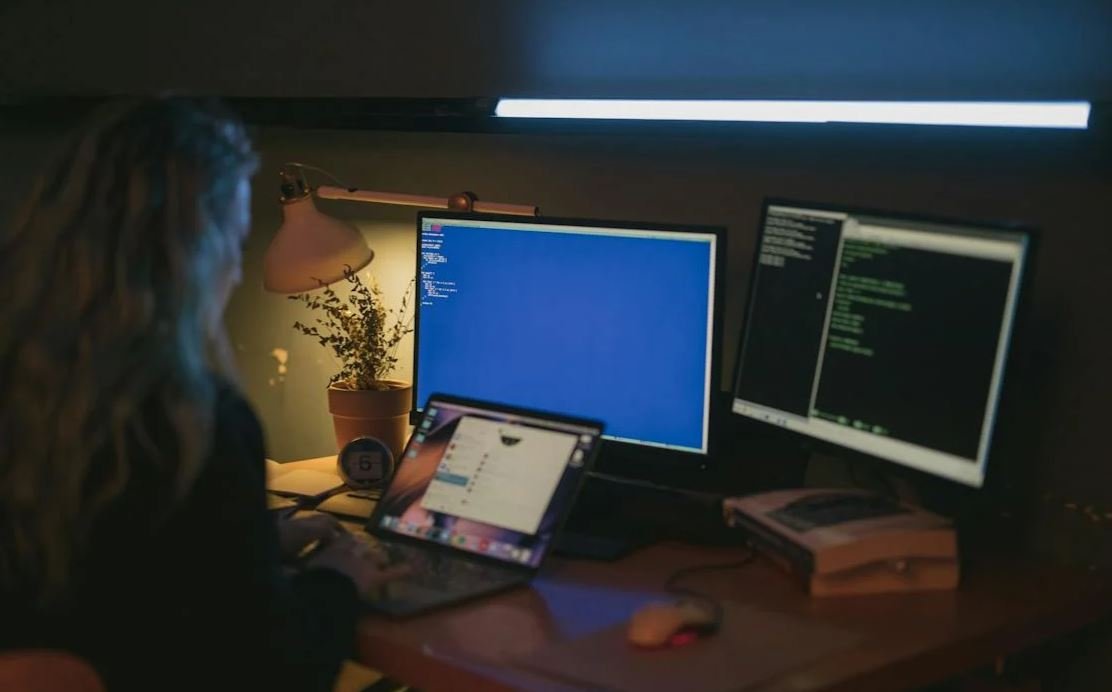How Twitter Has Changed
Twitter has revolutionized the way we communicate and consume content online. Since its launch in 2006, this social media platform has rapidly gained popularity, becoming an integral part of our daily lives. From breaking news and viral trends to political discussions and brand promotion, Twitter has changed the way we connect, share, and engage with others.
Key Takeaways:
- Twitter has transformed communication and content consumption in the digital age.
- From breaking news to brand promotion, Twitter has a significant impact on various aspects of our lives.
- Hashtags and trends have become a common language, allowing people to engage in conversations worldwide.
- The brevity of tweets has encouraged concise and impactful messaging.
**With the power of hashtags**, Twitter allows users to categorize and follow specific topics or events, creating a common language that connects people globally. Hashtags have become a powerful tool for organizing conversations and reaching a wider audience.
Twitter’s 280-character limit has transformed the way we communicate online. *In just a few sentences, users can share their thoughts, opinions, and news in a concise yet impactful manner*. This constraint encourages clarity and forces users to carefully choose their words, making each tweet more impactful.
The Evolution of Twitter:
Over the years, Twitter has introduced a range of features that have shaped the platform and enhanced the user experience. Let’s explore some of the notable changes:
- **Retweets**: Introduced in 2009, the retweet feature allowed users to easily share content from others, boosting engagement and spreading information quickly.
- **Hashtags**: Initially used by a small group of users, hashtags became an official feature in 2009. Today, they are widely used to categorize content, follow trends, and connect users with similar interests.
- **Verified Accounts**: In 2009, Twitter launched the verified accounts feature, which helps users identify legitimate and prominent accounts of public figures, brands, and organizations.
Impact and Influence:
The impact of Twitter extends beyond personal interactions, with the platform playing a significant role in various spheres:
- **News and Journalism**: Twitter has become a primary source for breaking news, allowing real-time updates on events unfolding worldwide.
- **Politics**: Twitter has changed the landscape of political communication, with politicians utilizing the platform to connect with their constituents, share their views, and drive public discourse.
- **Branding and Marketing**: Businesses leverage Twitter to promote their products, engage with their audience, and create brand awareness.
| Year | Number of Tweets per Day |
|---|---|
| 2007 | 5,000 |
| 2012 | 340 million |
| 2018 | 500 million |
With the introduction of features like live video streaming, polls, and moments, Twitter continues to evolve and adapt to the changing needs of its users.
Conclusion:
Twitter has undeniably revolutionized the way we communicate, share information, and engage with others. From hashtags and concise messaging to its impact on news, politics, and marketing, Twitter has left an indelible mark on our digital world.

Common Misconceptions
Twitter is only for young people:
One common misconception about Twitter is that it is only popular among young people. While it is true that Twitter gained popularity among the younger demographic initially, it has since diversified its user base. People of all ages, from teenagers to senior citizens, use Twitter for various purposes.
- Twitter has a large number of users in their 30s and 40s.
- Business professionals utilize Twitter for networking and brand promotion.
- Political figures and celebrities often have a significant presence on Twitter, attracting followers of all ages.
Tweets are limited to 140 characters:
Contrary to popular belief, tweets on Twitter are no longer limited to 140 characters. In 2017, Twitter expanded the character limit to 280, allowing users to express themselves more freely. This change has had a significant impact on how users communicate and share information on the platform.
- With the increased character limit, users can provide more context and details in their tweets.
- Creative ways of storytelling and sharing opinions have emerged with the new limit.
- Twitter threads, where users can connect multiple tweets, have become popular for longer thoughts or discussions.
Twitter is only for personal use:
Another common misconception surrounding Twitter is that it is only used for personal purposes, such as sharing personal thoughts and connecting with friends. While Twitter is indeed used for personal use, it is also widely used for professional and business-related purposes.
- Many businesses and brands use Twitter as a marketing tool to engage with their audience and promote their products or services.
- Journalists and news organizations use Twitter to share breaking news and real-time updates.
- Experts in various fields use Twitter to share valuable insights and engage in industry-related discussions.
Twitter lacks privacy and is unsafe:
Some individuals believe that Twitter lacks privacy and is an unsafe platform due to the public nature of tweets and the potential for online harassment. While it is true that tweets are public and can be seen by anyone, Twitter provides features and tools to enhance privacy and address safety concerns.
- Users have the option to protect their tweets, making them visible only to approved followers.
- Twitter has implemented measures to combat harassment, such as block, mute, and report features.
- Users can customize privacy settings and restrict who can interact with their account.
Twitter is just a platform for trivial updates:
Many people perceive Twitter as a platform for sharing trivial updates about what people had for breakfast or what they are currently doing. While Twitter does indeed allow for sharing such updates, it is a versatile platform where people discuss a wide range of topics and engage in meaningful conversations.
- Twitter is often used to discuss current events, politics, and social issues.
- Communities and interest groups thrive on Twitter, allowing like-minded individuals to connect and exchange ideas.
- Users can follow experts and thought leaders in various fields to access valuable insights and information.

Twitter has undoubtedly had a profound impact on the way we communicate and receive information. From its humble beginnings in 2006, the social media platform has grown to become a global phenomenon. In this article, we explore ten fascinating aspects of Twitter’s transformation, highlighting the ways in which it has changed our lives.
1. Hashtag Usage and Trending Topics
Twitter introduced the hashtag in 2007, revolutionizing the way we categorize and follow conversations online. Today, hashtags are used to highlight trends, events, and even social causes, allowing users to easily discover and join discussions surrounding specific topics.
2. News and Journalism
Twitter has emerged as a powerful tool in the world of news and journalism. From citizen reporting to real-time updates, news organizations now utilize Twitter to disseminate information instantaneously. With millions of users sharing breaking news within seconds, Twitter has challenged traditional media outlets.
3. Celebrity Interaction and Personal Branding
Gone are the days when celebrities seemed distant and untouchable. Twitter has allowed celebrities to connect directly with their fans, providing a platform for personal branding and interaction. These virtual dialogues have humanized public figures and opened up new avenues for communication.
4. Crisis Communication
Twitter has proven invaluable during times of crisis. From natural disasters to emergencies, the platform enables real-time sharing of information, offering immediate assistance and guidance. Government agencies often utilize Twitter to issue safety alerts and updates during critical situations.
5. Social Justice Movements
Twitter has played a pivotal role in mobilizing social justice movements around the world. It provides a platform for marginalized voices to be heard, bringing visibility to important causes. Hashtags like #BlackLivesMatter and #MeToo have helped initiate global conversations and drive positive change.
6. Access to Experts and Influencers
Twitter allows users to connect directly with experts and influencers in various fields. The platform allows for direct engagement, enabling users to seek advice, knowledge, and insights. Now, acquiring expertise is just a tweet away.
7. Political Discourse and Activism
The political landscape has been significantly molded by Twitter. Political leaders and activists harness the power of the platform to connect with constituents, share their viewpoints, and rally support. Twitter has become a virtual battleground for political debates and discussions.
8. Brand Advertising and Marketing
Twitter has revolutionized the world of advertising and marketing. With targeted ads and sponsored content, brands can reach millions of potential customers and drive engagement. Twitter’s unique format allows for creative approaches to promotion, making campaigns more interactive and memorable.
9. Real-Time Customer Support
Gone are the days of waiting on hold for customer support. Twitter offers an efficient and public avenue for customers to voice their concerns, allowing companies to respond promptly. This real-time interaction enhances customer service and fosters brand loyalty.
10. Memes and Viral Content
Twitter is a breeding ground for viral content and memes that quickly capture the attention of users across the globe. Memes have become a form of expression and social commentary, often fueling online trends and shaping popular culture.
In conclusion, Twitter has transformed the way we communicate, share information, and engage with the world. From breaking news to social activism, this platform has revolutionized various aspects of our lives. As Twitter continues to evolve, it will undoubtedly shape the future of communication and influence our society in profound ways.
Frequently Asked Questions
How has Twitter changed the way people communicate?
Twitter has revolutionized communication by enabling real-time, concise, and instant messaging. It has allowed users to share news, ideas, and opinions instantaneously, fostering global conversations and breaking news faster than traditional media outlets.
What impact has Twitter had on journalism?
Twitter has transformed journalism by providing journalists with a platform to disseminate news, track breaking stories, and interact with their audience. It has also opened up opportunities for citizen journalism, allowing anyone to report news and share firsthand experiences.
How has Twitter influenced political discourse?
Twitter has significantly impacted political discourse by providing a platform for politicians, policymakers, and citizens to engage in discussions, share political views, and rally support. It has also played a crucial role in organizing grassroots movements and political protests.
Has Twitter played a role in promoting social justice movements?
Yes, Twitter has played a significant role in promoting social justice movements by allowing activists to raise awareness, mobilize support, and hold institutions accountable. Hashtags such as #BlackLivesMatter and #MeToo have gained global attention and catalyzed important societal conversations.
How has Twitter impacted the business world?
Twitter has transformed the business world by providing a direct means of communication between brands, customers, and influencers. It has become a valuable marketing tool, allowing companies to reach a wider audience, provide customer support, and gain insights into consumer preferences.
What are the risks of using Twitter?
Using Twitter carries certain risks, including the spread of misinformation, cyberbullying, privacy concerns, and online harassment. Users should exercise caution and be mindful of the content they share and engage with on the platform.
How has Twitter changed the entertainment industry?
Twitter has significantly impacted the entertainment industry by providing a platform for celebrities, musicians, and filmmakers to connect with their fans, promote their work, and generate buzz. It has also become a popular platform for live-tweeting TV shows and award ceremonies.
Can Twitter be used for educational purposes?
Yes, Twitter can be used for educational purposes. It allows educators to engage with students, share educational resources, and facilitate discussions. Twitter chats and hashtags related to specific subjects provide opportunities for collaborative learning and professional networking.
What are some notable events that were primarily driven by Twitter?
Some notable events primarily driven by Twitter include the Arab Spring protests, the Occupy Wall Street movement, the Ice Bucket Challenge, and various celebrity controversies. These events gained widespread attention and sparked discussions on a global scale through the power of Twitter.
How has Twitter influenced the sports industry?
Twitter has significantly influenced the sports industry by allowing fans to connect with athletes, teams, and sports media in real-time. It has become a platform for sports news, live updates, and analysis, enhancing the overall fan experience and providing a space for sports discussions.




